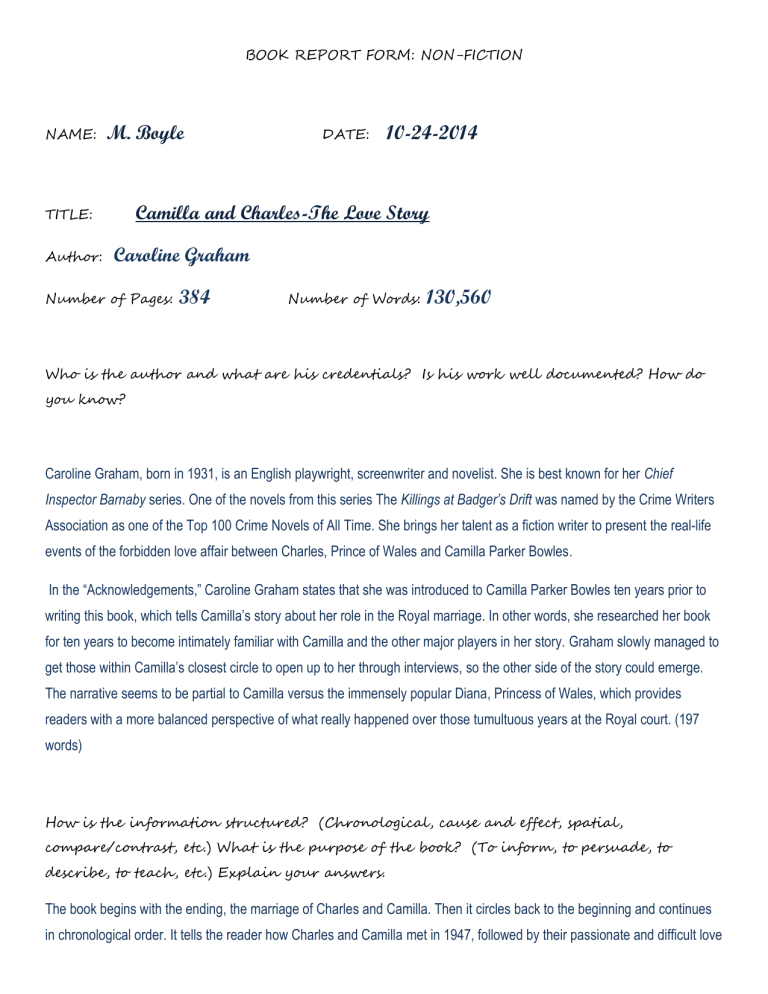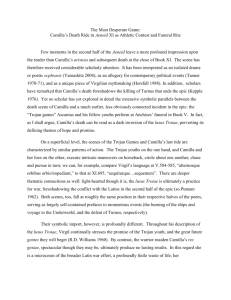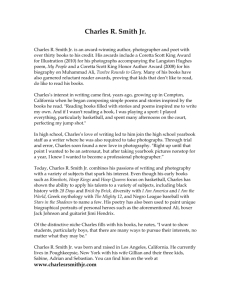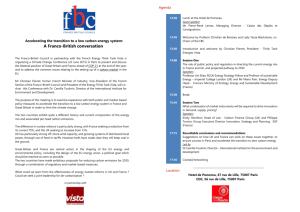Sample Non-Fiction Book Report Charles and Camilla

BOOK REPORT FORM: NON-FICTION
NAME:
M. Boyle
DATE:
10-24-2014
TITLE:
Camilla and Charles-The Love Story
Author: Caroline Graham
Number of Pages:
384
Number of Words:
130,560
Who is the author and what are his credentials? Is his work well documented? How do you know?
Caroline Graham, born in 1931, is an English playwright, screenwriter and novelist. She is best known for her Chief
Inspector Barnaby series. One of the novels from this series The Killings at Badger’s Drift was named by the Crime Writers
Association as one of the Top 100 Crime Novels of All Time. She brings her talent as a fiction writer to present the real-life events of the forbidden love affair between Charles, Prince of Wales and Camilla Parker Bowles.
In the “Acknowledgements,” Caroline Graham states that she was introduced to Camilla Parker Bowles ten years prior to writing this book, which tells Camilla’s story about her role in the Royal marriage. In other words, she researched her book for ten years to become intimately familiar with Camilla and the other major players in her story. Graham slowly managed to get those within Camilla’s closest circle to open up to her through interviews, so the other side of the story could emerge.
The narrative seems to be partial to Camilla versus the immensely popular Diana, Princess of Wales, which provides readers with a more balanced perspective of what really happened over those tumultuous years at the Royal court. (197 words)
How is the information structured? (Chronological, cause and effect, spatial, compare/contrast, etc.) What is the purpose of the book? (To inform, to persuade, to describe, to teach, etc.) Explain your answers.
The book begins with the ending, the marriage of Charles and Camilla. Then it circles back to the beginning and continues in chronological order. It tells the reader how Charles and Camilla met in 1947, followed by their passionate and difficult love
affair despite all the odds stacked against them, leaving the reader with a “fairy-tale, anything-is-possible” sense where the prince and princess finally find happiness together. In the chapter “The Wrong Woman,” the author tells the story of Diana and Charles’s honeymoon. Charles was in love with his best friend Camilla, and he was unable to overcome the emotional wall of his true feelings for Camilla. As a result, Charles and Diana argued throughout the two-week cruise, with Diana gorging and vomiting every day, already stricken with the bingeing and purging disorder. Charles said she “smelled of sick the whole time.”
The author’s purpose in the biography is to shed a new light on an old story. This historic love triangle had always been presented favoring Diana, characterizing her as a victim of the Camilla, the villain and homewrecker. Diana was, after all, the princess the entire world adored.
The reader also learns that Charles has had a difficult relationship with his father, Philip. Philip determined that his eldest son should be a “man’s man.” He sent Charles to a rigid boarding school; he pressured Charles to follow in his footsteps and join the Royal Navy. Incidentally, it was Philip who had forced Charles to marry Diana when Charles would have happily remained a bachelor. (255 words)
What text features help the reader understand the information better? (maps, charts, photos with captions, sidebars, etc.)
The author included black and white photographs with captions depicting not only Charles and Camilla but also other key players in the saga, including Princess Diana, and her sons, the princes William and Harry. These pictures help paint the images in our minds that go with the story. The photo of the two women in Charles’ life on page 161 is especially telling. It depicts Diana and Camilla walking down the street side by side. There is quite a bit of distance between them, reflecting the mutual animosity between the two. It is also interesting to note that Camilla is walking confidently, with her head held high, while Diana looks up at the camera shyly and self-consciously. She looks uncomfortable and lonely, which represents how she might have felt in her marriage.
The author divided the book into 29 fast-paced chapters, which read very much like a novel. The titles she chose for the chapters, such as “Love at First Sight” or “A Fresh Start,” reveal the period of time or events discussed in the chapter. The titles also give a clear indication about the overall theme and tone of the biography. They contain a lot of words and phrases that connote conflict and struggle, including “Living a Lie,” “Diana’s Revenge,” and “Damage Limitation.” Later on, however, the titles include positive words of victory and acceptance, such as “Burying the Hatchet,” “Free at Last,” and “Wedding.” In other words, the chapter titles tell the story. (245 words)
Make Connections and Respond: Why is this book important to the world and to me?
How does it relate to my life, other stories or the outside world? In what ways has this book affected me?
I read this book during a difficult time in my life. I was struggling with making the right choice in my personal life. This book gave me hope that what was meant to be would happen, and that one must be patient and not lose faith.
The story of Charles and Camilla cautions the reader against making judgments about someone without having all the information. For years, we only heard the story of Diana, Charles’ then-wife, and the media painted a very dark picture of
Camilla as the villain. This book unearths the flesh-and-blood Camilla, with her own struggles, and suggests that she is not the evil person we all thought she was, but a complex and caring woman.
Tales about the royal families of England, especially the Tudors, have always fascinated me. Camilla and Charles—The
Love Story offers the reader a glimpse into the day-to-day operation of the court and the duties and perks of being a member of the Royal family. Prince Charles comes across as an indecisive person with a lot of inner turmoil. He was known to withdraw himself for days and weeks at a time to indulge his emotional struggles that came with being in love with a woman who was not his wife. I got the impression that had he had a choice, he would have been happy to be just an ordinary person without the many responsibilities he has to shoulder as Prince of Wales. (235 words)






